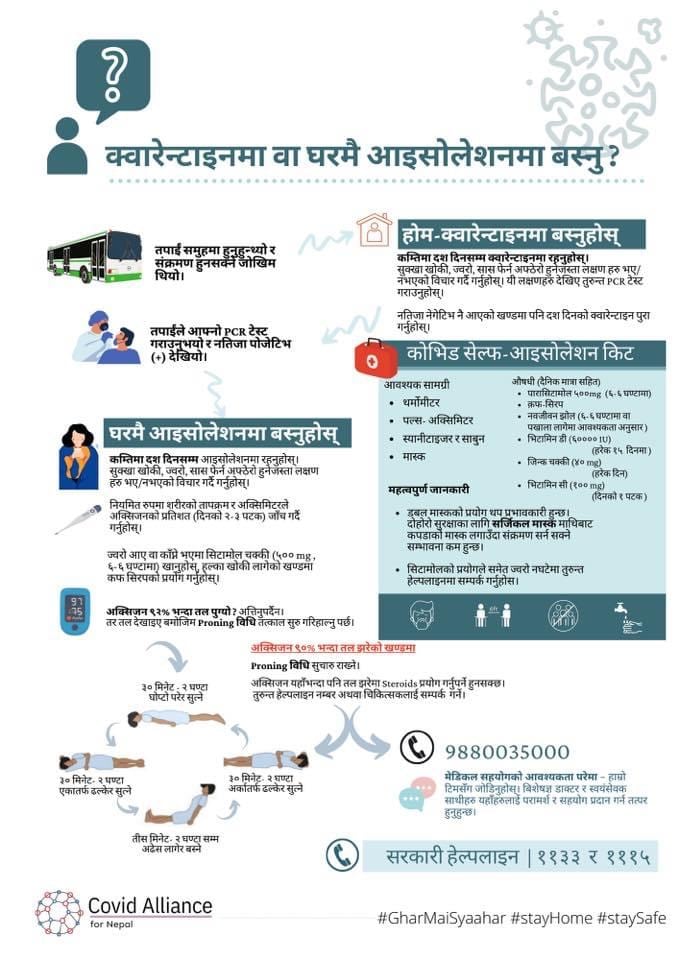While conditions related to the Covid-19 pandemic have started to improve in some countries worldwide, the World Health Organization (WHO) has announced a new problem: a “vaccine apartheid.” And Nepal is at ground zero.
Nepal has now surpassed India, as well as all other South Asian countries, in terms of Covid-19 deaths per capita. With more than 7,000 deaths reported as of this article’s publishing, the pandemic crisis is on track to exceed the devastating fallout from the 2015 earthquakes that took nearly 9,000 lives.
After an initial Covid-19 wave hit in 2020, cases in the small Himalayan nation dramatically decreased. The Nepal government declared the conquering of Covid-19 in January 2021 and, with that, society began to reopen. Government leaders encouraged international travel back to Nepal, and the previously quarantined city of Kathmandu experienced a resurgence of aid workers, tourists, and nationals returning home to visit family.
However, Nepal’s Covid-19 case numbers began to climb again in early April 2021. Reuters reported 48 new infections on March 12, and by May 1 the new infection number had soared to 5,706. Several conditions contributed to the rampant spread of this second wave in Nepal – the mutant India variant being among the largest offenders.
This variant emerged during the time of year when Nepali residents gather for celebrations like weddings, Nepali New Year, and religious festivals. Unaware of the virus’s prevalence, many Nepal residents joined millions on the pilgrimage to Kumbh Mela festival in India, intensifying the migration of the variant back to Nepal. Nepalese migrant workers also returned home by cramming onto ferries and into shared cars after India locked down to manage the virus’s spread. As these workers traveled home, border crossings remained open with few requirements for testing or quarantines.
This second wave of Covid-19 has brought with it more severe symptoms than the first. Doctors from Sukraraj Tropical and Infectious Disease Hospital (STIDH) in Teku, Kathmandu describe that patients have presented with more respiratory issues, such as difficulty breathing, during this wave – which has created an increased need for oxygen. While they express a strong desire to help the hospital’s Covid patients, these doctors explain that a full recovery becomes threatened when oxygen levels drop too low. STIDH currently has 15 tons of oxygen, an amount that supported 20-25 days of treatment during the first wave. That same amount of oxygen now lasts one week or less.

The second wave of Covid-19 has also impacted a wider age range, with citizens ages 30-50 becoming more infected and more young people dying. Residents with underlying health conditions such as diabetes and cardiovascular disease also remain at high risk of complications if infected.
Now one month after the April 29 lockdown, the outbreak in Kathmandu is becoming more manageable. However, STIDH doctors warn about the increased threat of Covid-19 in remote villages. Before this second wave, the virus had already impacted the livelihood of millions of residents, reducing access to food due to loss of income. As a result, wage workers from cities like Kathmandu made an exodus home to remote villages despite lockdown restrictions. With this migration back to rural villages, many citizens unknowingly carried the virus with them.
“We are seeing more patients coming to Kathmandu from outside villages with Covid,” one STIDH doctor said. “This is very dangerous, as most places do not have health posts.” Even villages that do have designated health posts often don’t have medical staff trained to treat Covid-19 infections. Nor do they have proper PPE, oxygen or isolation wards.
Head of STIDH’s Emergency Department, Lila Nath, describes the situation of emergency beds for Covid-19-infected patients. Once Covid-19 became a global pandemic, Nath expanded the emergency room’s bed count from 10 to 50. This number remained manageable during the pandemic’s first wave in 2020. At the peak of the second wave in early May 2021, the hospital was over capacity. Nath describes having more than 100 patients connected to oxygen, which is often administered in parking lots and chairs.

Kathmandu’s STIDH doctors encourage residents to take the safety protocols seriously, but not to panic. They have the following messages for the people of Kathmandu:
- Don’t panic!
- Follow government guidelines and restrictions and take them seriously. The sooner we follow the protocols the sooner the situation will be over. As difficult as the lockdown is, it helps us better control the spread of the virus and save lives.
- Only follow reputable sources for information. Do not only find news on social media.
- If you’re feeling sick, isolate yourself for 10 days. If possible, get a PCR test to see if you are carrying the virus.
- If possible, visit a nearby hospital or health post and take only prescribed medicine from a doctor.
- If you test positive, isolate for 10 days. Do not go to the pharmacy to self administer antibiotics or other medications.
Do NOT self administer oxygen in your own home. Not every patient who contracts Covid needs oxygen and antibiotics. Too much oxygen can act like a poison and kill you. - Oxygen is not a medicine or vitamin to keep you healthy. It should only be administered in severe circumstances by a doctor in a hospital.
- Keep yourself healthy. Drink lots of ginger, lemon honey tea. Do light exercises and eat a healthy diet of fruits and vegetables.
- Only go home to your village if you must. If you do, get a PCR test before traveling. Even if you test negative, isolate for 10 days upon arrival.
- Conditions are improving in Kathmandu, but it’s not time to let your guard down. The virus is still very much alive.
- If you get COVID, don’t try to hide that you are sick. You must share this information with everyone you have been in contact with.
Nepal is dependent on other countries to make or donate Covid vaccines. Nearly 2 million Nepalis are awaiting their second dose of the AstraZeneca vaccine. This vaccine had been previously produced in India, but production halted as India copes with its own Covid crisis. STIDH doctors agree that Nepal’s greatest need now is that of oxygen and vaccines. If 10 million of Nepal’s 30 million citizens received one or more vaccine doses, they say, it could dramatically slow the spread of the virus. Oxygen, especially in rural areas, is also of utmost importance.
When asked what vaccine would be most helpful, doctors replied “We don’t care. Vaccines. This is the only way to stop this whole thing.”
Information in this article gathered via an interview of Lila Nath, Head of Emergency Department, Dr. Sudhir Baniya Khatri, and Shrawan Kumar, Medical Officer at Sukraraj Tropical and Infectious Disease Hospital in Teku, Kathmandu. Interview conducted by Dan Maurer (Elevate Nepal), Dr. Sara Parker (Liverpool John Moores University, Dignity Without Danger) and Dr. Ayesha Ghimire.





